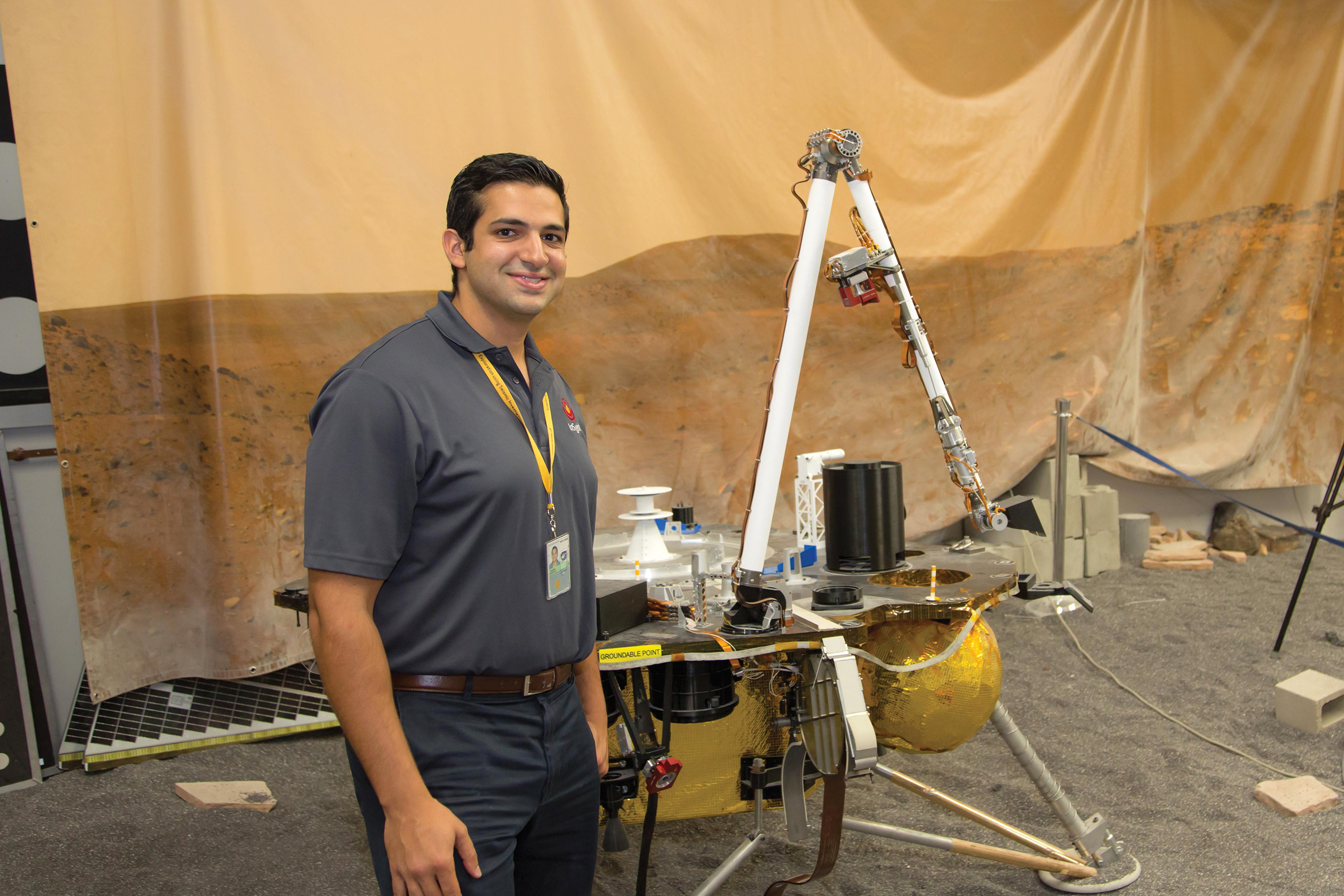
Breathe from your core
NASA’s Jet Propulsion Laboratory (JPL) in Pasadena, California, is preparing for a mission that will land a robotic terrestrial explorer on Mars equipped with geophysical instruments that will probe beneath the planet’s surface. Our alum, who is a project resource analyst at JPL, gives us an insider's view.
Yoga, singing, meditation: There are plenty of activities during which you might be instructed to breathe from your core. As it turns out, we all do.
“The electromagnetic field around earth is derived from the moving of molten iron in the core, deep below the planet’s surface,” explains Mason Takidin (MS-BA ’16), project resource analyst at NASA’s Jet Propulsion Laboratory (JPL) in Pasadena, California. That electro-magnetic field protects the planet from solar winds, which speed through space at several hundred miles per second and can strip a planet of its breathable gases.
JPL is preparing for NASA’s Interior Exploration using Seismic Investigations, Geodesy, and Heat Transport (InSight) mission. NASA will land a robotic terrestrial explorer on Mars equipped with geophysical instruments that will probe beneath the planet’s surface. “It’s very important to study the depths of a planet beneath its crust,” Takidin says.
The birth of rocky planets
“InSight will help to build the foundation for future science missions on Mars,” says Bruce Banerdt, the principal investigator for the InSight mission. “The interior of a planet retains the fingerprints of the origins of a planet and can help explain how it was formed.” The InSight mission hopes to uncover the mysteries of Mars and answer why a planet like Earth has become drastically different.
InSight was originally slated to launch in 2016, but the trip was knocked off schedule by leaky equipment. “With Mars missions, you have to wait two years to relaunch because of the way the orbit works,” Takidin says. The relative positions of Mars and Earth are only favorable for launching missions for a few weeks every 26 months.
Once landed, InSight’s vehicle will move the main two instruments (the seismometer and a heat flow probe) from the lander deck to the Mars surface. This will be the first mission to robotically deploy instruments on another planet. The spacecraft will then measure ground movement using the seismometer, and will command the heat-flow probe to hammer up to 15 feet into the Mars ground to study the planet’s interior heat flow.
The solar arrays on NASA's InSight lander are deployed in this test inside a clean room at Lockhead Martin Space Systems in Denver. This configuration is how the spacecraft will look on the surface of Mars.
It takes a village to raise a lander
“InSight is a very important project in a business sense because it shows JPL’s collaboration strengths,” Takidin says. “This is a mission with many foreign partners.”
The lander will carry a seismometer from France, a heat probe from Germany, plenty of hardware from a host of private companies, as well as numerous colleges and universities will lend their expertise. It is Takidin’s job to coordinate such players.
Working with InSight Project Manager Tom Hoffman, Takidin used analytical skills from his MS-BA program to effectively coordinate project control processes. The Jet Propulsion Lab does so much of this detailed coordination, it’s considered a NASA leader. “We’re sharing our experience with other NASA centers on how to monitor their projects and do project control when working with foreign partners,” Takidin notes.
Latest news
- Pop culture is key to effective teaching
How a management and entrepreneurship professor uses Ted Lasso and other pop-culture touchstones…
- Artificial intelligence in business master's degree helps Nathan Merriman combine business strategy with technology
Nathan Merriman (MS-AIB '25) had been working in business for a few years when he learned about…
- How the Executive MBA empowered Scott Gates to be a mission-driven leader
Scott Gates (BS Marketing '04, Executive MBA '15) had a very positive experience during his…